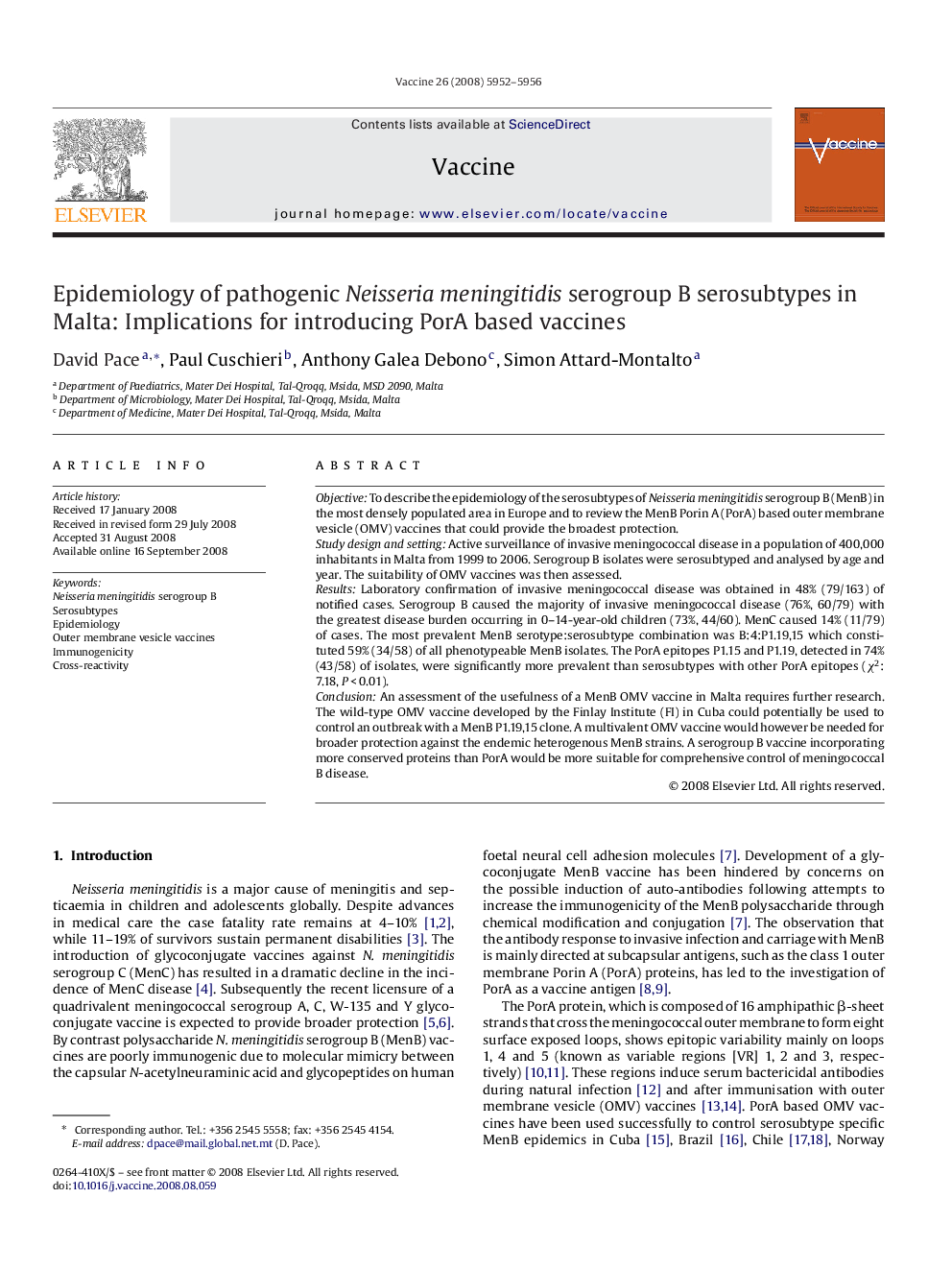| Article ID | Journal | Published Year | Pages | File Type |
|---|---|---|---|---|
| 2406078 | Vaccine | 2008 | 5 Pages |
ObjectiveTo describe the epidemiology of the serosubtypes of Neisseria meningitidis serogroup B (MenB) in the most densely populated area in Europe and to review the MenB Porin A (PorA) based outer membrane vesicle (OMV) vaccines that could provide the broadest protection.Study design and settingActive surveillance of invasive meningococcal disease in a population of 400,000 inhabitants in Malta from 1999 to 2006. Serogroup B isolates were serosubtyped and analysed by age and year. The suitability of OMV vaccines was then assessed.ResultsLaboratory confirmation of invasive meningococcal disease was obtained in 48% (79/163) of notified cases. Serogroup B caused the majority of invasive meningococcal disease (76%, 60/79) with the greatest disease burden occurring in 0–14-year-old children (73%, 44/60). MenC caused 14% (11/79) of cases. The most prevalent MenB serotype:serosubtype combination was B:4:P1.19,15 which constituted 59% (34/58) of all phenotypeable MenB isolates. The PorA epitopes P1.15 and P1.19, detected in 74% (43/58) of isolates, were significantly more prevalent than serosubtypes with other PorA epitopes (χ2: 7.18, P < 0.01).ConclusionAn assessment of the usefulness of a MenB OMV vaccine in Malta requires further research. The wild-type OMV vaccine developed by the Finlay Institute (FI) in Cuba could potentially be used to control an outbreak with a MenB P1.19,15 clone. A multivalent OMV vaccine would however be needed for broader protection against the endemic heterogenous MenB strains. A serogroup B vaccine incorporating more conserved proteins than PorA would be more suitable for comprehensive control of meningococcal B disease.
